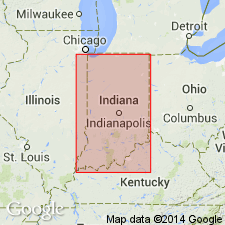
- Usage in publication:
-
- Alum Cave
- Modifications:
-
- Original reference
- Dominant lithology:
-
- Shale
- Limestone
- AAPG geologic province:
-
- Illinois basin
Summary:
Pg. 30-34. Described the beds between coal Va and coal V in western and southwestern Indiana as consisting of 35 feet of shales and limestone, to which he applied, in parentheses, the term Alum Cave. Age is Pennsylvanian.
Origin of name not stated.
Source: US geologic names lexicon (USGS Bull. 896, p. 43).
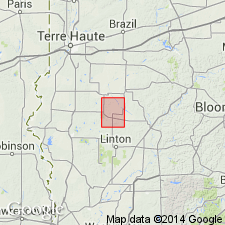
- Usage in publication:
-
- Alum Cave limestone member*
- Modifications:
-
- Revised
- AAPG geologic province:
-
- Illinois basin
Summary:
Alum Cave limestone member of Petersburg formation. Allocated to member status in Petersburg formation. In Jasonville quadrangle, Clay, Greene, and Sullivan Counties, Indiana, consists of gray impure hard limestone. Normally separated into two beds by 1 to 6 inches of calcareous shale; lower 1 or 2 inches of lower bed is shaly and fossiliferous. Thickness 4 to 6 feet. Underlies Dugger formation (new); overlies a black shale unit which overlies coal V. Age is Pennsylvanian.
Source: US geologic names lexicon (USGS Bull. 1200, p. 70).
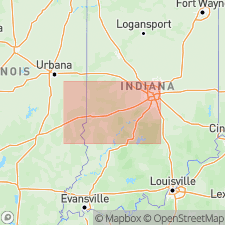
- Usage in publication:
-
- Alum Cave Limestone Member
- Modifications:
-
- Revised
- AAPG geologic province:
-
- Illinois basin
Summary:
Alum Cave Limestone Member assigned to Dugger Formation of Carbondale Group.
Source: GNU records (USGS DDS-6; Reston GNULEX).
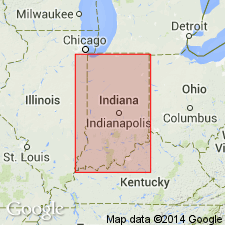
- Usage in publication:
-
- Alum Cave Limestone Member
- Modifications:
-
- Principal reference
- AAPG geologic province:
-
- Illinois basin
Summary:
Pg. 4 (article by A.M. Burger and C.E. Wier), table 3. Alum Cave Limestone Member of Dugger Formation of Carbondale Group. Typically medium- to blue-gray, fine-grained, argillaceous, locally sandy, fossiliferous limestone. Thickness averages 2.5 feet, ranges from 0.1 to 11.8 feet. Lies above Springfield Coal Member (coal V) of Petersburg Formation and below Antioch Limestone Member of Dugger Formation. Correlative with St. David Limestone Member of Carbondale Formation in Illinois. Age is Middle Pennsylvanian (Desmoinesian). Type section designated.
Type section (Alum Cave section, loc. 9 of Wier, in prep.): northwest of Coalmont in canyon of Sulphur Creek, near abandoned mining town of Alum Cave (New Pittsburg), in NW/4 NE/4 sec. 25, T. 9 N., R. 8 W., [Jasonville 7.5-min quadrangle], Sullivan Co., western IN.
[Wier (in prep.) = Stratigraphy of the Carbondale and McLeansboro Groups in southwestern Indiana, Indiana Geol. Survey Bull. XX, 171 p., unpub. ms., ca. 1961; available online through Indiana Univ. Scholarworks http://hdl.handle.net/2022/3612, accessed September 18, 2009. Wier's description of Alum Cave section, loc. 9 (App.) missing from online document.]
Source: Publication.
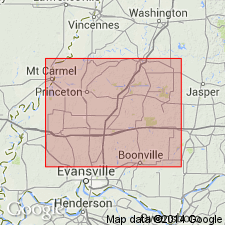
- Usage in publication:
-
- Alum Cave Limestone Member*
- Modifications:
-
- Overview
- AAPG geologic province:
-
- Illinois basin
Summary:
Used as Alum Cave Limestone Member of Dugger Formation of Carbondale Group in IN.
Source: GNU records (USGS DDS-6; Reston GNULEX).
For more information, please contact Nancy Stamm, Geologic Names Committee Secretary.
Asterisk (*) indicates published by U.S. Geological Survey authors.
"No current usage" (†) implies that a name has been abandoned or has fallen into disuse. Former usage and, if known, replacement name given in parentheses ( ).
Slash (/) indicates name conflicts with nomenclatural guidelines (CSN, 1933; ACSN, 1961, 1970; NACSN, 1983, 2005, 2021). May be explained within brackets ([ ]).

